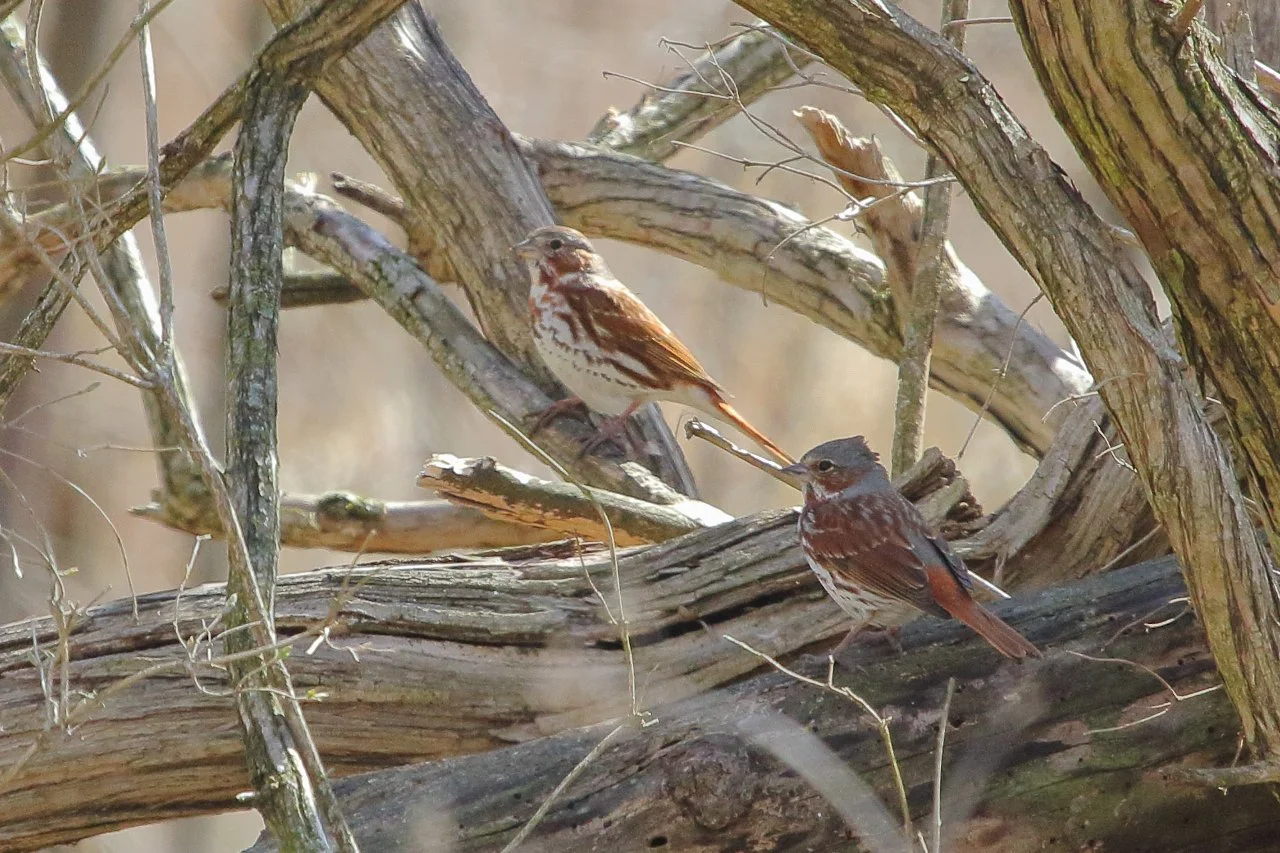Bird of the Month: Fox Sparrow
Fox Sparrows. Photo by Jeff Bryant.
By Roger Digges, CCAS Vice-President
When I was new to birding 36 years ago and trying to identify a little brown bird in dim twilight, I wrote this in my notes: “sparrows are hard.” And they can be. To a beginner or even experienced birders some look so similar with only subtle differences in their plumage it’s really difficult to tell them apart. This particular little brown bird however made my task much easier by flying away and showing me its white outer tail feathers, which told me it was a vesper sparrow, my first. But that’s not November’s bird of the month. Vesper Sparrows are rare here now.
I saw our bird of the month a year and a half earlier when I looked out the window of a friend’s house and saw a small reddish-brown bird scratching back and forth in the leaf litter of a streamside thicket. I had no idea what it was, but it was certainly easy to see as it created a spray of fallen leaves. I learned from my friend who was a much more experienced birder, that this was a Fox Sparrow, also my first.
I would learn that these birds are large and chunky, for sparrows, with thick, blurry rusty streaks on their sides, finer, more distinct, rusty streaks on their breasts, a white belly, and a gray and chestnut head. Their name comes from the resemblance of the color of their plumage to the rich coat of a red fox. While these birds are present in our area from mid-fall to mid-spring, and fairly common during March, April, and November, Fox Sparrows are not necessarily easy to find. But this November, if you happen to live in a neighborhood where there are thickets, brush piles, or unruly hedges, you may be lucky. Start looking for a bird performing what allaboutbirds.org calls a “double scratch” in leaf litter, hopping forward, then immediately hopping backwards dragging their feet through the leaves.
You may also be able to attract these unusual sparrows to your yard. I’ve been fortunate to see them in mine 5 times, but that’s over a period of 20 years. It takes a very special yard to draw Fox Sparrows. You need to provide dense cover, berry bushes, or other shrubs, as well avoid raking leaves near that cover. If you don’t have such plants, you can create a brush pile. If you locate your hanging feeder(s) near that cover with leaf litter underneath, you stand a better chance of attracting Fox Sparrows. These birds like black oil sunflower seeds with hulls on or off, nyjer, millet, cracked corn, or milo as they are scattered by birds above them in the feeders. You still may not have Fox Sparrows visiting your yard, but you stand a better chance of seeing them there.
Of course, if Fox Sparrows won’t come to you, you can go to them. They like any streamside thickets or forest edges. Some places where I’ve found them include Homer Lake Forest Preserve, River Bend Forest Preserve, Busey Woods, Crystal Lake Park, and Meadowbrook Park, although I’m sure you can find them anywhere woods and water come together.
Any Fox Sparrow you see this month may be planning to stay in place over the winter. But it’s also possible they are just using this spot as a refueling station on their way as far south as the Gulf of Mexico.
How are Fox Sparrows doing? Fortunately, they are abundant with an estimated 35 million birds in North America, and their population is stable. You can still help this bird by providing or encouraging the provision of their favorite foraging spaces— messy places with dense cover and lots of leaves.

